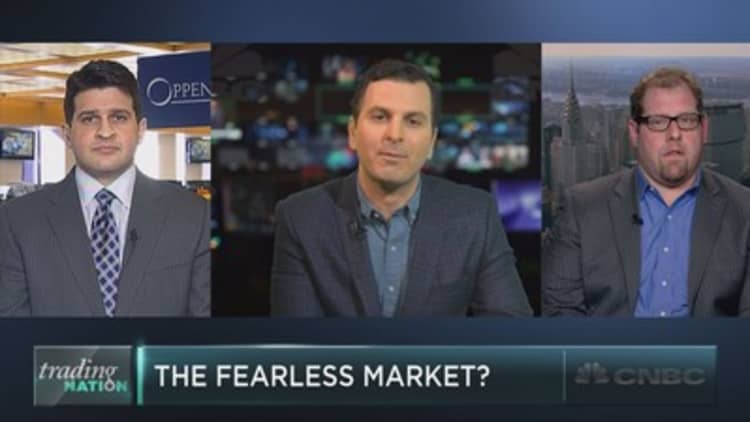
A striking stat about the CBOE Volatility Index provides yet more testimony to the anomalous quiet seen in the equity market.
In all the sessions since Jan. 4, the index known as the VIX has not risen above 13.28. The VIX hasn't previously stayed below 13.5 for as many straight sessions since before the financial crisis.
"The markets are literally gorging on risk, and the VIX tells that story," Max Wolff, strategist at 55 Capital, wrote to CNBC on Thursday.
The VIX uses the prices of options on the to measure the magnitude of expected moves over the following 30 calendar days. Since index options are more commonly used to hedge against downside than to speculate on upside, the VIX often sheds light on investor demand for so-called portfolio insurance, thus making it a common gauge of short-term market fear.
While the daily level of the VIX can be affected by several different factors, the message sent by a VIX that steadfastly refuses to budge above 13.5 is: no fear here.
The VIX is said to be mean-reverting, meaning that when low it tends to rise, and when high it tends to fall. Yet traders shouldn't take the recent low levels of the VIX as a surefire sign that a spike must be around the corner.
Through Friday's close, the index has gone 46 sessions without breaking above 13.5. The last time it did so, the index didn't stretch above that level for another 68 sessions, staying below 13.5 from the middle of September 2006 to the end of February 2007.
Some use the VIX as a "contrarian" indicator, meaning that they take low levels on the index as a sign of potential complacency and thus of an increased chance of a market drop.
Yet Ari Wald, head of technical analysis at Oppenheimer, doesn't see it quite that way.
"What we're seeing is a characteristic of a very healthy bull market," Wald said Thursday on CNBC's "Trading Nation." "You can't sell stocks when the VIX is low, because historically, during bull markets, you tend to see a low VIX throughout the advance."
Indeed, the technical analyst found that "the forward returns on the S&P 500 are generally higher when the VIX is below 15 than above it."
The low VIX is just one sign of an unusually temperate market environment. Through Friday, the S&P 500 has gone 103 days without a 1 percent daily drop.






